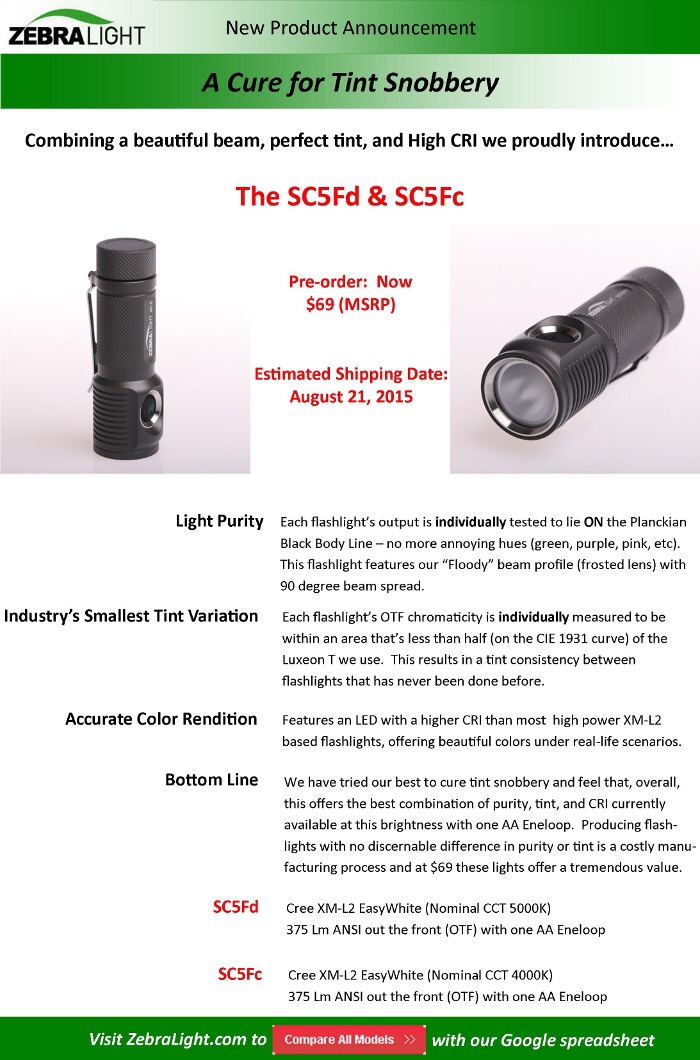KeepingItLight
Flashlight Enthusiast
One of the big reasons that tint bins have been established is so that a large array of similar LEDs does not show variations in tint. That works great when you have a group of LEDs working together. Take, for instance, the Nichia 219B. Twistedraven reports that the 219B SW45 is rated at 4200-4700K. Several of them together will blend quite nicely, even when there are small variations in tint between individual LEDs.
In many flashlights, however, there is only one LED. That is why tint is such a lottery. If you get a light where the tint is at the extreme edge of a bin, say 4200K in the case of the Nichia above, its tint will be noticeably different than one at the other end of the bin. At 4200K, the tint may be too "rosy" for some.
Does this indicate a weakness in the binning system? For applications in precisely tinted flashlights, should the tint bins be more narrow?
It might be nice if high-end flashlight makers would individually test each LED prior to insertion a light, and re-bin using a narrower range. Better still would be if LED makers would do the testing and offer "precise-tint" models. The Nichia bins cited above, for example, could be divided in half or even into thirds. The LEDs that did not make the grade could be sold, discarded, or used in lower-end models. If, say, five LEDs were excluded for every two that were acceptable, and extra testing expense were also added in, the cost of a high-end flashlight would still be in the ballpark where these things sell.
If this is unreasonable for a large manufacturer to attempt, would it be viable for a modder?
In many flashlights, however, there is only one LED. That is why tint is such a lottery. If you get a light where the tint is at the extreme edge of a bin, say 4200K in the case of the Nichia above, its tint will be noticeably different than one at the other end of the bin. At 4200K, the tint may be too "rosy" for some.
Does this indicate a weakness in the binning system? For applications in precisely tinted flashlights, should the tint bins be more narrow?
It might be nice if high-end flashlight makers would individually test each LED prior to insertion a light, and re-bin using a narrower range. Better still would be if LED makers would do the testing and offer "precise-tint" models. The Nichia bins cited above, for example, could be divided in half or even into thirds. The LEDs that did not make the grade could be sold, discarded, or used in lower-end models. If, say, five LEDs were excluded for every two that were acceptable, and extra testing expense were also added in, the cost of a high-end flashlight would still be in the ballpark where these things sell.
If this is unreasonable for a large manufacturer to attempt, would it be viable for a modder?



